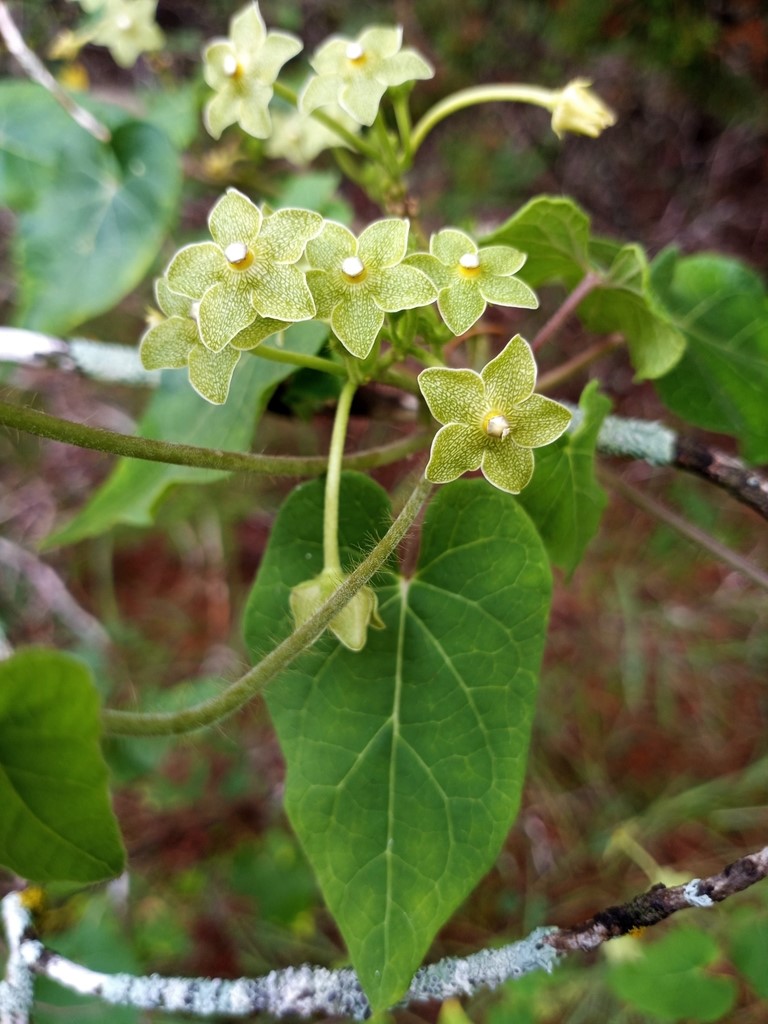Join us at our upcoming plant sale on November 9, 2024 from 10am-2pm at the Tye Preston Memorial Library. See the map and plant list below.

Here are the plants available. You can view the gallery of available plants below or use the table at the end of this page to make your own plant or shopping list. Note that this list may change as the plant sale approaches.
Table of Contents
Available Plants by Type
Herbaceous
Chile Pequin
Capsicum annuum

Lanceleaf Coreopsis
Coreopsis lanceolata

Blackfoot Daisy
Melampodium leucanthum

Lindheimer Beebalm
Monarda lindheimeri

Rock Penstemon
Penstemon baccharifolius

Pigeonberry
Rivina humilis

Wright's Skullcap
Scutellaria wrightii

Squarebud Daisy
Tetragonotheca texana

Four-Nerve Daisy
Tetraneuris scaposa

Shrub
White Mistflower
Ageratina havanensis

Black Dalea
Dalea frutescens

Kidneywood
Eysenhardtia texana

Fragrant Mimosa
Mimosa borealis

Devil's Shoestring
Nolina lindheimeriana

Aromatic Sumac
Rhus aromatica

Skeletonleaf Goldeneye
Viguiera stenoloba

Grass & Sedge
Sideoats Grama
Bouteloua curtipendula

Little Bluestem
Schizachyrium scoparium

Indiangrass
Sorghastrum nutans

Cactus & Succulent
Tree
Vine
Fern
Groundcover
Additional Plants available:
|
Calylophus Calylophous berlandieri |
1-2’ high; 1-2 spread’ | Sun/Part shade | Evergreen | Blooms Spring- summer | Showy yellow flowers |
|
Texas Betony Stachys coccinea |
1-1.5′ high; 2-3′ spread‘ |
Sun/Part Shade | Deciduous | Blooms Spring-fall | Coral/red flowers; |
Plant Sale Table
Here is the same list in tabular form. If you’d like to make your own shopping list you can copy and paste this table into a spreadsheet. For best results paste as text format into the spreadsheet.
| Common Name | Scientific Name | Growth Form | Light Requirement | Water Requirement |
|---|---|---|---|---|
| Aromatic Sumac | Rhus aromatica | Shrub | Sun, Part Shade, Shade | Low |
| Black Dalea | Dalea frutescens | Shrub | Sun | Low |
| Blackfoot Daisy | Melampodium leucanthum | Herbaceous | Sun | Low |
| Chile Pequin | Capsicum annuum | Herbaceous | Sun | Low |
| Devil's Shoestring | Nolina lindheimeriana | Shrub | Sun, Part Shade | Low |
| Four-Nerve Daisy | Tetraneuris scaposa | Herbaceous | Sun, Part Shade | Very Low, Low |
| Fragrant Mimosa | Mimosa borealis | Shrub | Sun, Part Shade | Low |
| Frogfruit | Phyla nodiflora | Groundcover | Sun | Low, Medium |
| Indiangrass | Sorghastrum nutans | Grass & Sedge | Sun, Part Shade, Shade | Medium |
| Kidneywood | Eysenhardtia texana | Shrub | Sun, Part Shade | Very Low |
| Lanceleaf Coreopsis | Coreopsis lanceolata | Herbaceous | Sun, Part Shade | Medium |
| Lindheimer Beebalm | Monarda lindheimeri | Herbaceous | Sun | Low, Medium |
| Little Bluestem | Schizachyrium scoparium | Grass & Sedge | Sun, Part Shade | Low, Medium |
| Pearl Milkweed Vine | Matelea reticulata | Vine | Part Shade | Low |
| Pigeonberry | Rivina humilis | Herbaceous | Sun, Part Shade, Shade | Low, Medium |
| Rock Penstemon | Penstemon baccharifolius | Herbaceous | Sun | Low |
| Sideoats Grama | Bouteloua curtipendula | Grass & Sedge | Sun, Part Shade | Medium, High |
| Skeletonleaf Goldeneye | Viguiera stenoloba | Shrub | Sun | Low |
| Snapdragon Vine | Maurandella antirrhiniflora | Vine | Part Shade | Medium |
| Squarebud Daisy | Tetragonotheca texana | Herbaceous | Sun | Low |
| White Mistflower | Ageratina havanensis | Shrub | Sun, Part Shade | Low |
| Wright's Skullcap | Scutellaria wrightii | Herbaceous | Sun, Part Shade | Low |





